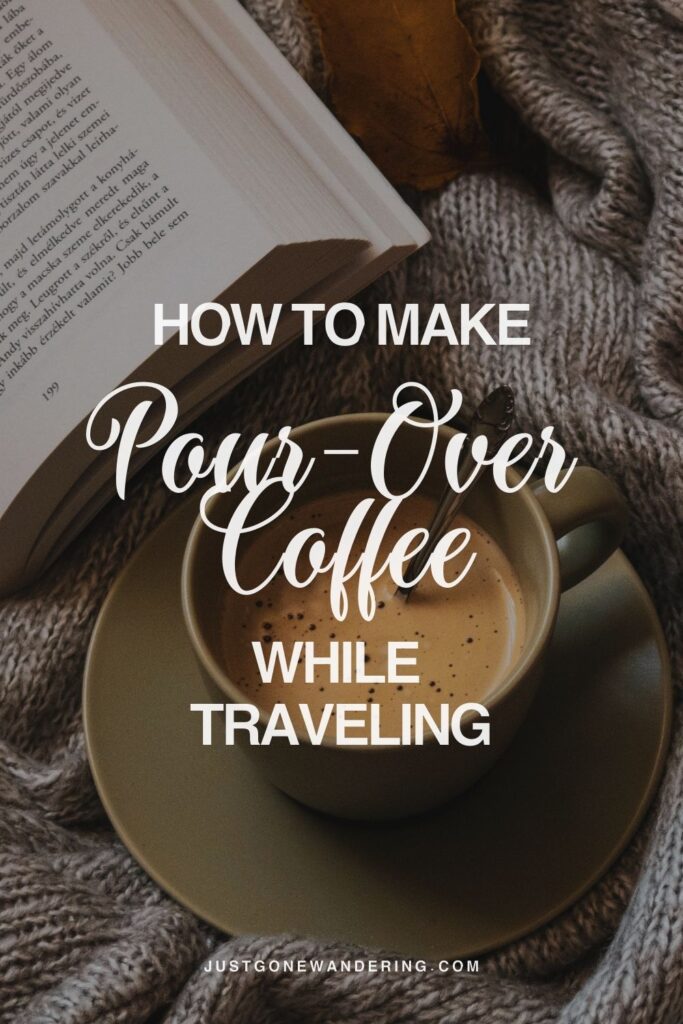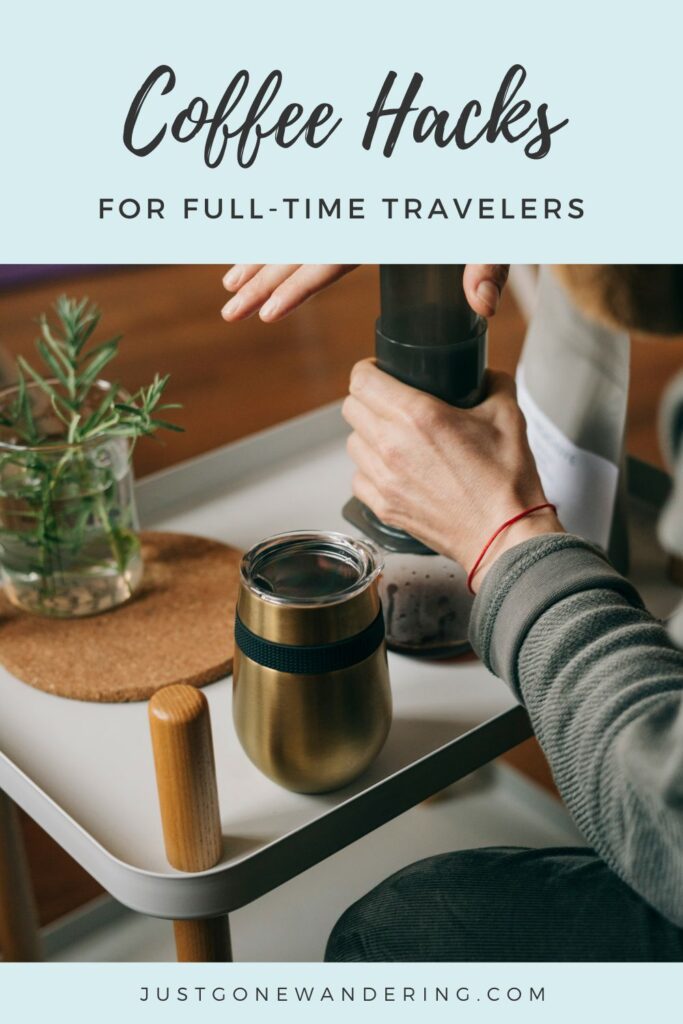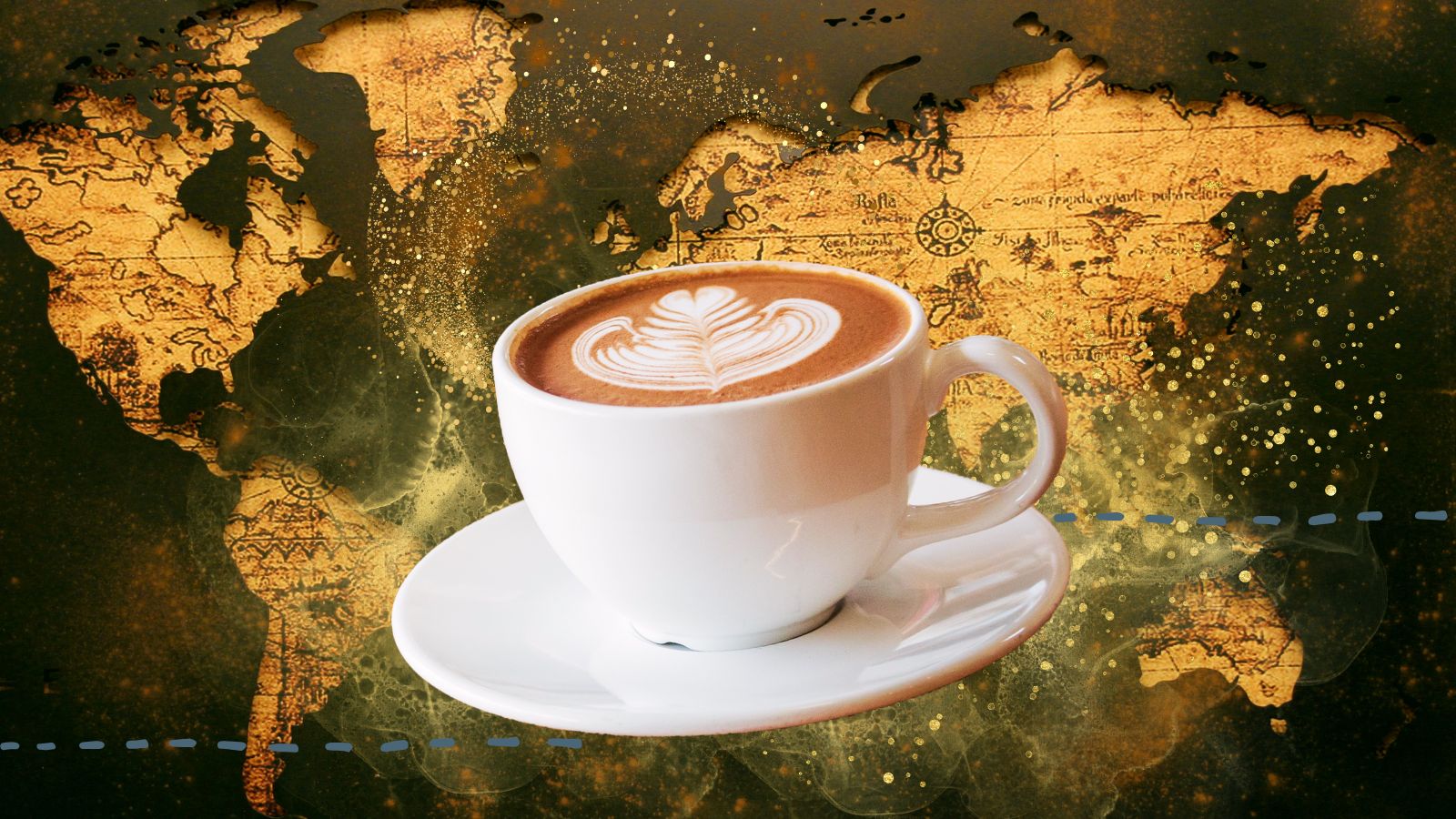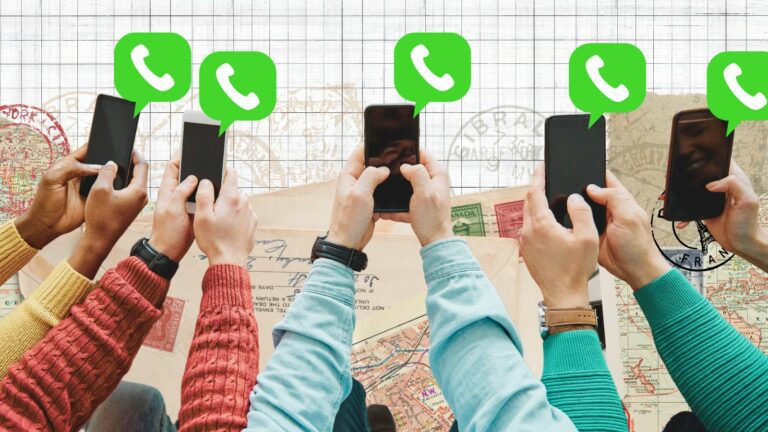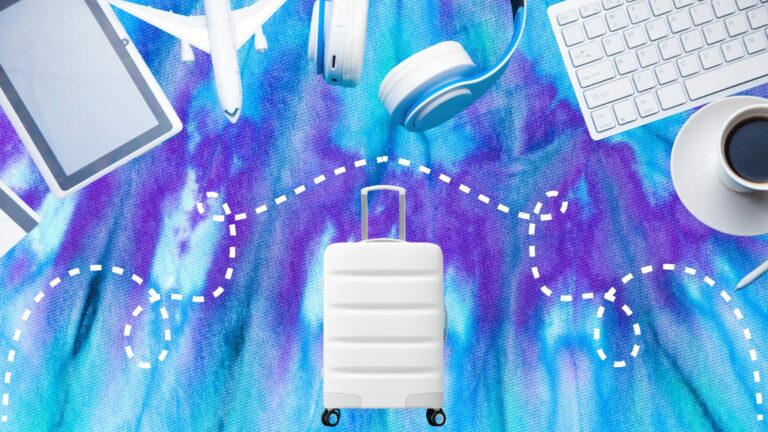How to Make Good Coffee While Traveling Full-Time
When you’re traveling long-term, a good cup of coffee can feel like a small miracle. I know this firsthand – I spent a year lugging my own coffee gear across Western Europe because local options just weren’t cutting it.
Let’s be real: finding a great cup of coffee while traveling isn’t always easy. But you don’t need to settle for terrible instant coffee or overpriced café drips. With a few smart strategies and some compact gear, you can make decent coffee pretty much anywhere.
Note: This is NOT for people who are traveling super light. By necessity, you have to carry more stuff with you if you’re determined to make your own coffee on the road. How MUCH you carry depends on how particular you are about your coffee, which we’ll discuss in this post.
Just Gone Wandering is supported by readers! This post contains affiliate links. If you click on a link and buy something, I get a small percentage at no extra cost to you. Your support helps keep this blog running— thank you! Read full disclosure here.
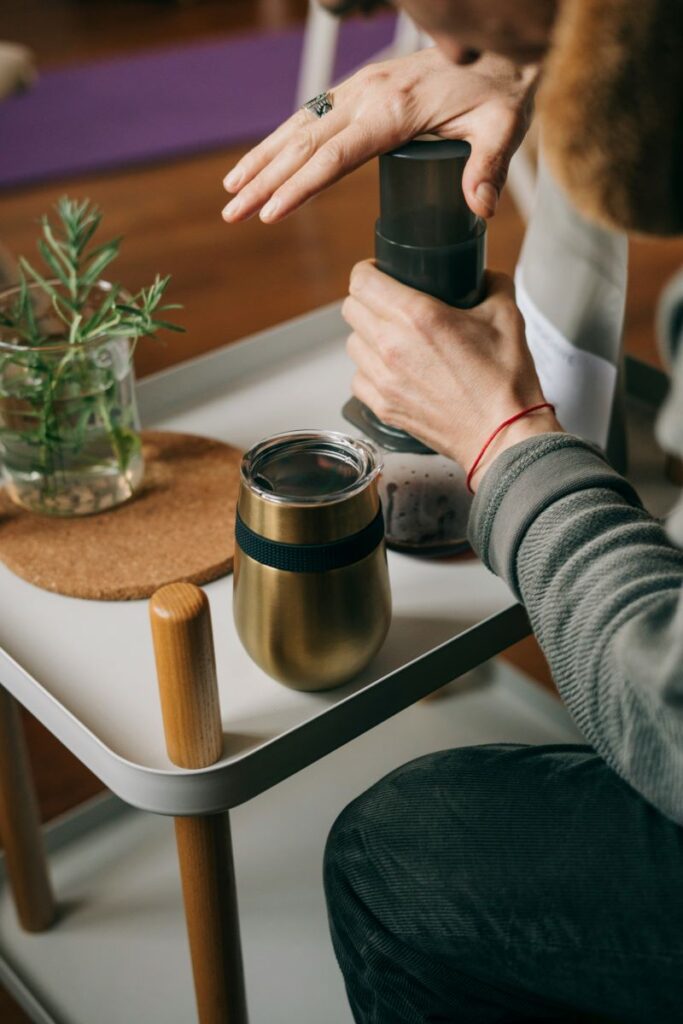
Essential Coffee-Making Gear for Travelers
So this is where it all starts. If you’re going to make your own coffee while traveling, then either you’re making fresh coffee with grounds, or you’re going the instant route. Instant coffee requires less “stuff” to make, but it can also mean for a more varied coffee experience (sometimes to your detriment).
For real coffee freaks, you’re going to have to carry more stuff to make a consistently good cup of coffee. At the minimum, that means something to brew the coffee, plus your own coffee beans/grinds. You may also want something to heat water, a nicer cup, and possibly more accessories like a milk frother if you’re really fancy.
Here’s some items to consider adding to your packing list:
Travel French Press
Normal French presses are bulky and made of glass, which is heavy and fragile. A travel French press is made from other materials (plastic or stainless steel) and is much sturdier.
You probably already know a popular travel French press brand: AeroPress! It’s the one that all coffee lovers gravitate towards because it’s reasonably priced and can usually do multiple “modes” of coffee, not just the French press. The AeroPress Go, for instance, can do regular pour-over and some espresso thing as well. i
If you’re going to have ONE item with you, an AeroPress is a good option as it’s easy to use and made especially for travelers.
Collapsible Coffee Dripper
For those who prefer something more low-tech, a collapsible coffee dripper might be a good option. You can get one from silicone or lightweight plastic, but I’ve seen lightweight metal ones, too. There’s lots of styles, but generally anything for “pour over” coffees is what you want.
You’ll probably also want to carry a paper filter (depending on the style of dripper you have) and you might need an electric kettle for heating up water.
Basically you just stick the dripper on top of a cup, put the paper filter in and then coffee grounds, pour hot water over the grounds, and then let gravity work.
I’m actually traveling with a Vietnamese phin filter now! I picked it up during my last visit to Vietnam and it’s nice to have, though a bit annoying to pack because it doesn’t collapse. Also, the filter is built in so it does require a bit more clean up.
Portable Espresso Maker
There’s some kind of beef between coffee people and espresso people, idk. But if you’re an espresso person, then you probably want something specifically for you.
Hand-pumped models like the WACACO Minipresso could be a good option. Or if you already have an AeroPress, you can get an attachment for making espressos! That’d probably be my plan, as it means more variety than just one type of coffee.
Coffee Grinder
Pre-ground coffee loses flavor quickly, especially when exposed to air. (I’ve never been super picky about this, but some coffee enthusiasts swear by it.) Carrying beans around extends the life of your coffee, though you then have to figure out how to grind the beans. A manual grinder like the Hario Mini Slim is worth considering since you can make very fresh coffee whenever you want.
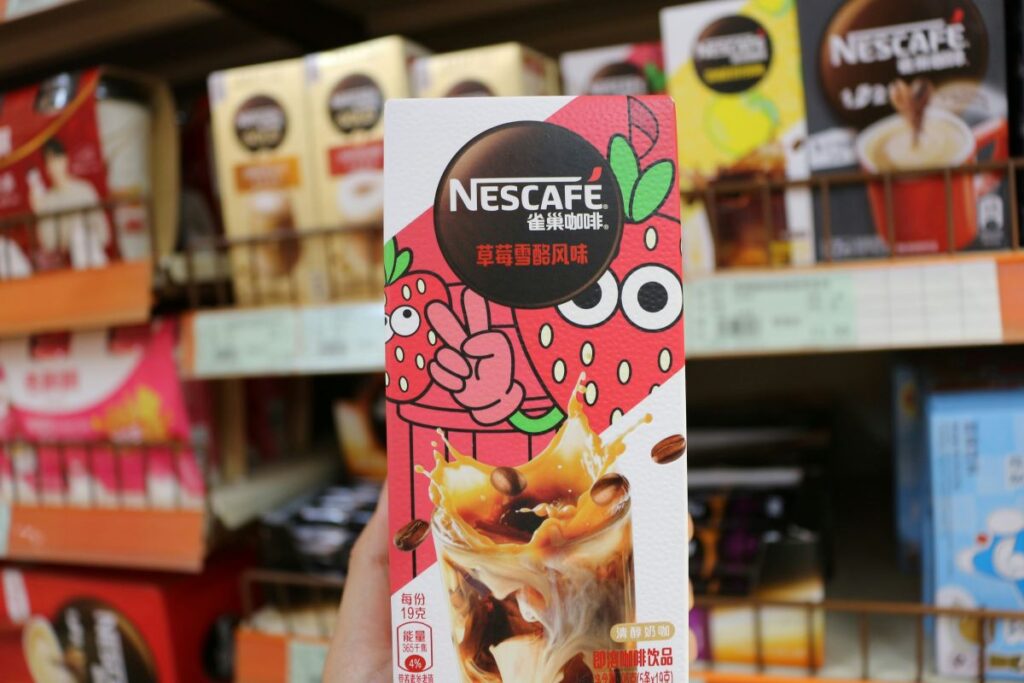
Instant Coffee (?!)
I get it– the words “instant coffee” brings up images of sad, watery brown liquid that barely resembles actual coffee. For me, I’m not picky about taste as much but I DO have my favorites. Nestle is one of those worldwide brands that you can find basically anywhere, even in very rural places. In a pinch, that’ll do for me.
But trust me, instant coffee has undergone a serious makeover in recent years. I think Starbucks started it with their instant Verona coffee packs 10-ish years ago (or whenever it was) and now there’s tons of specialty instant coffee available.
Specialty Instant Options:
- Swift Cup Coffee: Offers single-origin packets with nuanced flavors
- Sudden Coffee: Known for working with top-tier roasters
- Voilà Coffee: Provides small-batch instant coffees with distinct flavor profiles
Pro tip: I always have at least one pack of instant coffee in my bag. If I’m somewhere without a way to make coffee, I can usually find hot water and just make my own easily enough.
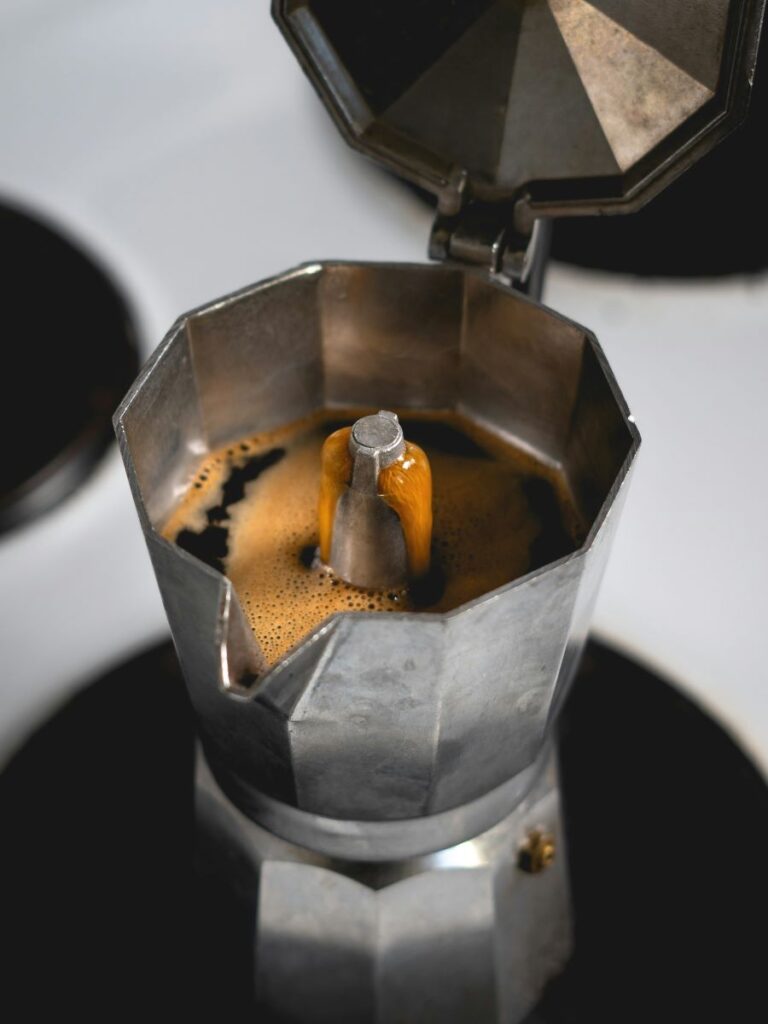
Storing Coffee While Traveling
If you’re putting in a ton of effort to make nice coffee while backpacking, then you need to make a small effort at storing your coffee properly.
Obviously it’s easy to just throw everything into a Ziploc bag and hope for the best (…which is what I do), but after a while that bag will be gross and your coffee disgusting. Here’s some of my suggestions for an alternative:
Sealed Containers
For the best quality coffee, you need to store the grounds in an airtight container. Oxygen is one of coffee’s biggest enemies—it steals away aroma and flavor faster than you can say “good morning.”
Here’s what to look for in a container:
- Glass or stainless steel are ideal since they don’t retain odors, but the weight can be problematic if you’re traveling light. If you go for a plastic option, use BPA-free options.
- Compact designs like silicone travel bags or collapsible containers work wonders for saving space.
If you’re going off the grid for a while, small vacuum-sealed options are a great choice to further lock out air. For long-term travelers, this Reddit thread on coffee storage tips offers more ideas for storage.
Avoiding Moisture and Heat
Coffee and moisture? They’re not friends.
Whether you’re backpacking through the rainforest or just dealing with humid hotel rooms, moisture is a sneaky villain that can mess up your coffee faster than you think. Heat isn’t any better. Together, they create a double whammy of staleness and unpleasant flavors.
Here’s how you can protect your beans:
- Store your coffee away from direct sunlight—think inner compartments of your bag or a shaded spot in your camping gear.
- Use silica gel packets (the food-safe kind) in your storage container to absorb any accidental humidity.
- Don’t keep your coffee near heat sources like portable stoves or direct sunlight.
For those heading into hotter climates like Southeast Asia, lightweight silicone travel bags can be surprisingly effective in maintaining a decent seal without adding extra weight to your bag. More advice on portable storage solutions can be found in this comprehensive guide from Hot Foot Coffee.
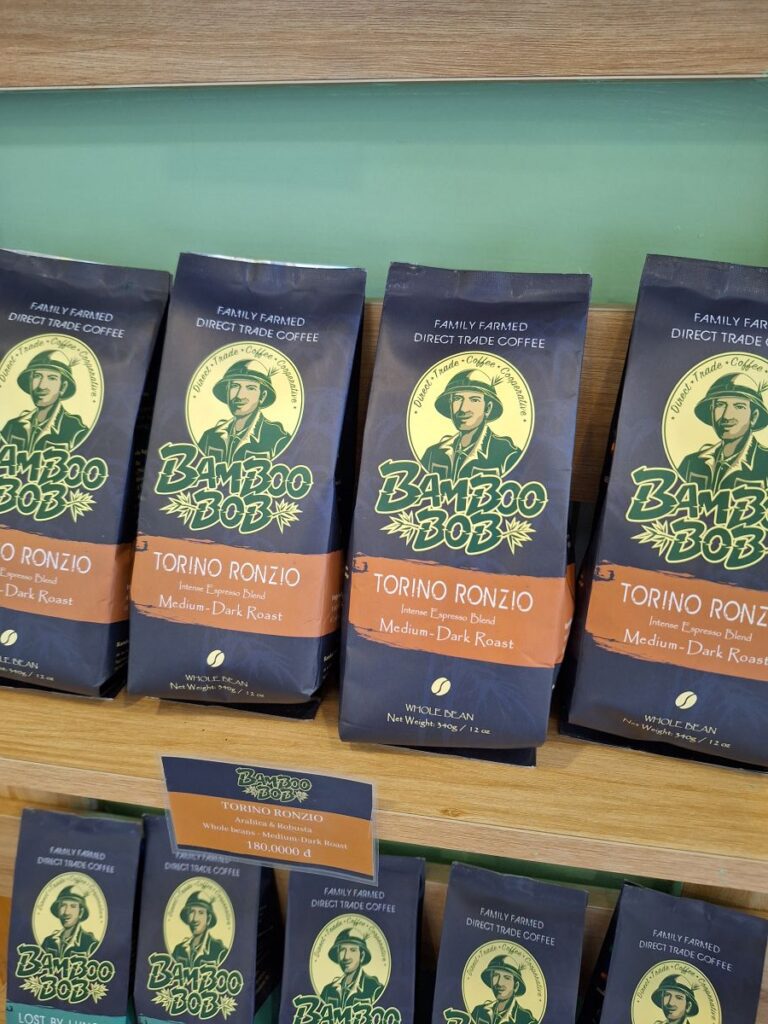
Restocking Coffee Supplies on the Go
When you’re traveling long-term, running out of coffee supplies can feel like a mini crisis—especially when your next cup of caffeine is the key to tackling an early morning hike or long travel day.
Luckily, finding high-quality coffee on the go is much easier when you know where to look. Most places have coffee available somewhere, even if they don’t have a huge cafe culture. You might have to go to a few places to find decent beans, but that’s just part of the adventure.
Local Cafes
One of the best options for sourcing fresh beans is to pop into a local café. Independent coffee shops often stock freshly roasted beans, some from their own roasters. This is the easiest way to find coffee– and a great way to try out local beans, too!
You can often learn about the local coffee scene through travel forums, Facebook groups or apps like BeanHunter.
BeanHunter focuses specifically on cafés with quality coffee, and it’s got reviews from real people so it’s easy to find great places around the world. It’s maybe not as extensive as Google Maps (not yet anyway) but it’s a fun alternative for finding cafes.
If you prefer Google Maps, just search ‘coffee’ in your area and look for highly rated spots. You can filter for ‘open now’ or ‘local favorites’ can help you narrow it down. These tools have saved me countless times when I needed a caffeine fix in a new city!
Related: Learning How to Make Egg Coffee in Da Nang, Vietnam (Cooking Class Review)
Local Grocery Stores
Maybe the easiest way to find coffee, though “high quality beans” may not be available at the corner market.
Modern supermarkets often carry a range of whole-bean coffee, including single-origin options. Look for vacuum-sealed packs to ensure freshness. If you’re in Europe, stores often feature local roasts with distinctive regional flavors you won’t find anywhere else.
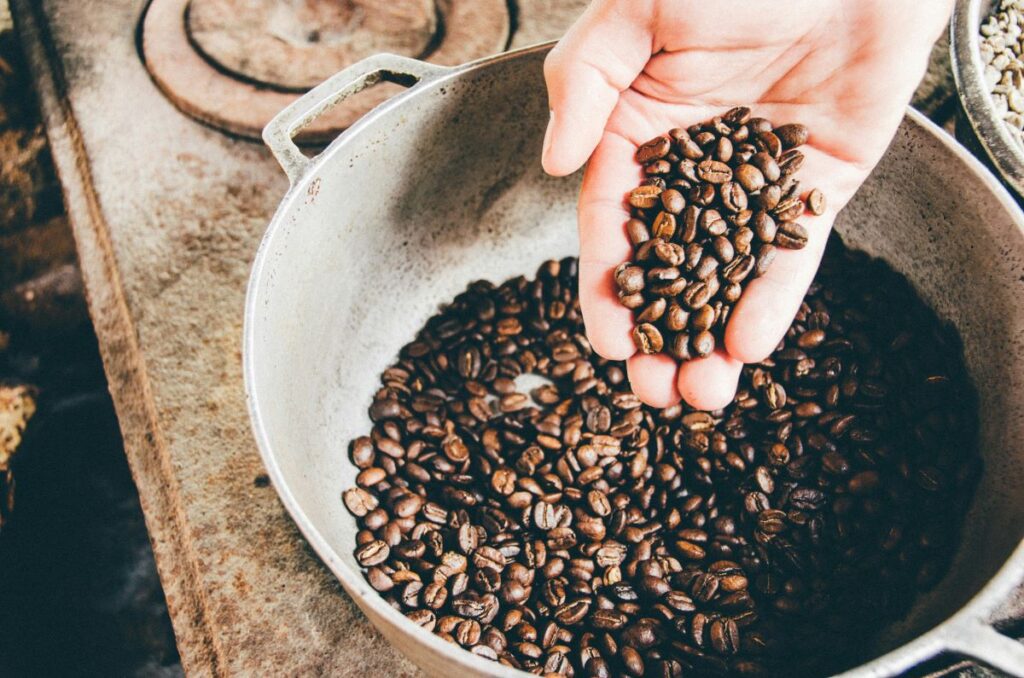
Markets and Trader-Style Cafés
Farmers’ markets can be a treasure trove for coffee enthusiasts. Many stalls offer uniquely roasted beans or small-batch specialties! It’s a great way to try different types of coffee without breaking the bank.
Trader-style cafés, often found in larger cities, focus on providing responsibly sourced beans. These establishments make for an excellent pit stop—you get premium beans and a quick chance to recharge with an espresso shot. Look for places labeled “fair trade” on Google Maps to find these places.
Online Stores
Many specialty coffee roasters offer international shipping. If you’re on an extended trip and struggling to find good beans, this might be your best bet. Companies like Cafe Imports are pros at delivering high-quality beans to your doorstep—even if that doorstep is a hostel in the middle of nowhere.
And of course there’s always mega shopping apps like Amazon, Lazadee, or even Aliexpress. Can’t say how good the coffee from there will be, but you’ll have a LOT of options to look through.
Final Thoughts
One of my favorite things about making my own coffee while I’m traveling is that I get to try local roasts! And I have one less thing to stress about in the morning because I know I can make my own coffee first things. Honestly, making good coffee while traveling isn’t about being fancy– it’s about enjoying a small comfort no matter where you are. Experiment, be flexible, and don’t take it too seriously.
Happy brewing, and may your travels be as rich as your coffee.
